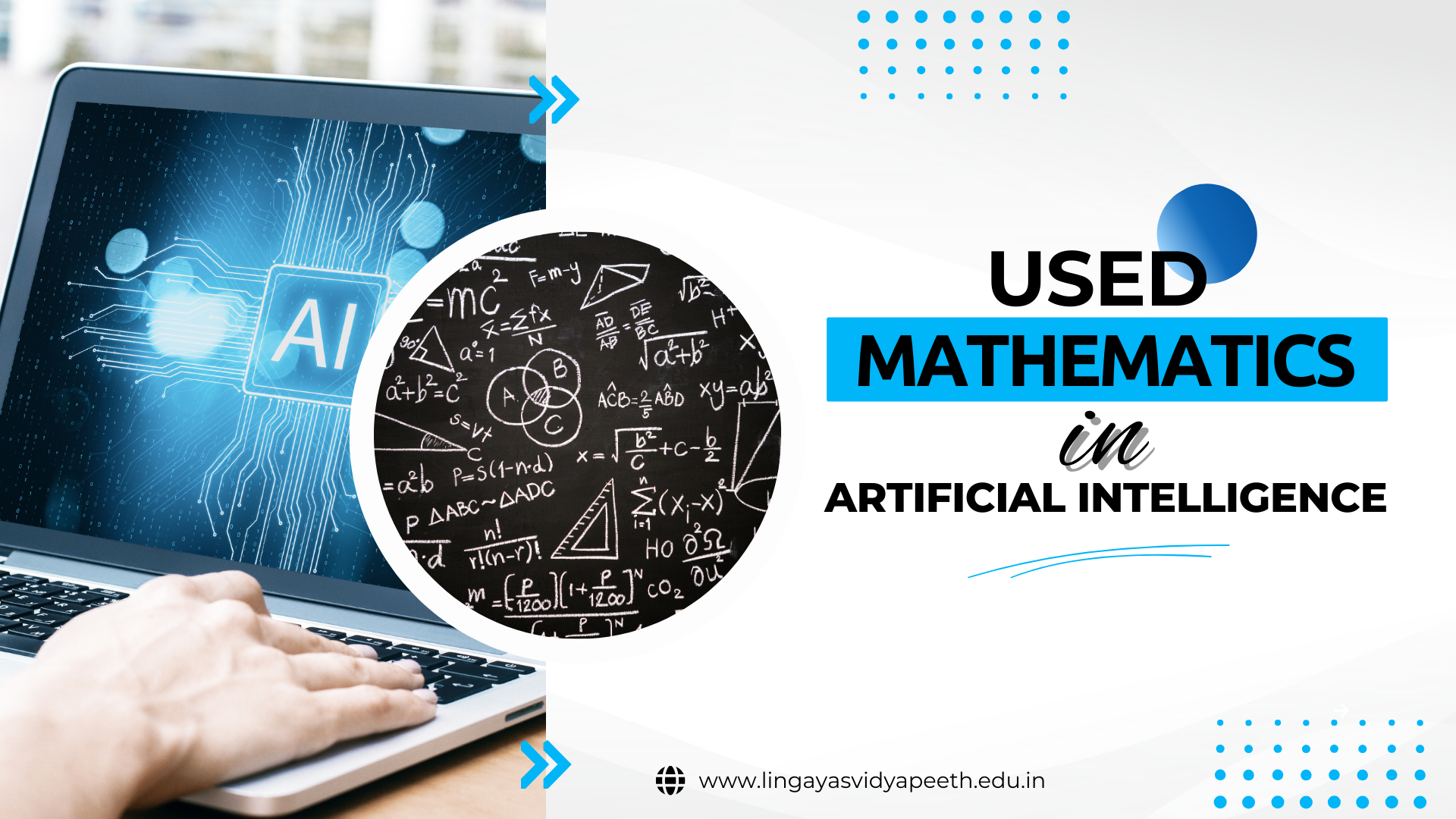Home » How is Mathematics Used in Artificial Intelligence?

Artificial intelligence (AI) has become a ubiquitous term, woven into the fabric of our daily lives. AI is quietly working behind the scenes, from the instant you unlock your phone with facial recognition to personalized recommendations on your favorite streaming service. But have you ever wondered what makes this “intelligence” possible? The answer lies in a seemingly unrelated field: mathematics.
Math isn’t just about equations on a chalkboard; it’s a powerful language for describing the world around us, identifying patterns, and making predictions. This very ability is what underpins the magic of AI.
Look at here some fascinating intersection of mathematics and artificial intelligence:
At the heart of AI lie algorithms, a set of instructions that a computer can follow to solve a problem. These algorithms are often derived from various branches of mathematics, including:
These are just a few foundational areas. More advanced mathematics like graph theory, complex analysis, and information theory also play vital roles in specific AI applications.
Machine learning (ML) is a subset of AI where algorithms learn from data without explicit programming. This learning process heavily relies on mathematical concepts.
Deep learning, a powerful form of machine learning inspired by the structure of the human brain, also leverages a significant amount of math:
Algebra puzzles are a great way to challenge your mathematical skills
The world of AI research is constantly evolving, and mathematicians are at the forefront of these advancements. Here are some exciting areas where math is shaping the future of AI:
As we continue to unravel the mysteries of AI and its applications, the profound nexus between mathematics and artificial intelligence will undoubtedly remain at the forefront of technological advancement, shaping the future of our digital world. Embracing this synergy opens doors to unprecedented possibilities, where the art of mathematics converges with the science of AI, illuminating new horizons of discovery and innovation.
Discover the magic of mathematics by purusing a BSc degree in mathematics in leading top university in Faridabad, Lingaya’s Vidyapeeth! Our vibrant campus, world-class faculty, and innovative curriculum make us the perfect choice for your BSc Mathematics journey. With top-notch facilities and endless opportunities for growth, Lingaya’s Vidyapeeth is where your passion for math can truly flourish. Join us and unlock your potential in the fascinating world of mathematics!
From
Ms. Priyavada
Assistant Professor
Department of Mathematics
Lingaya’s Vidyapeeth
Best Colleges in Faridabad for BSc Mathematics
June 25, 2024
RECENT POSTS
CATEGORIES
TAGS
Agriculture Agriculture future AI Architecture artificial intelligence Bachelor of Commerce BA English BA Psychology BTech AIML BTech CSE BTech cybersecurity BTech Engineering Business management career Career-Specific Education career guide career option career scope Civil engineering commerce and management Computer Science Computer science engineering Data science degree education Engineering Engineering students English Literature english program Fashion Design Fashion design course Higher Education Journalism journalism and mass communication law Law career Machine Learning mathematics MBA MBA specialization Mechanical Engineering Pharmacy Psychology Research and Development students
Nachauli, Jasana Road, Faridabad, Haryana
Address: C-72, Second Floor, Shivalik, Near Malviya Nagar,
Above HDFC Bank, New Delhi 110017
Landline No. - 011-46570515 / 45138169 / 41755703
Mobile No. - +91-7303152412 / +91-7303152420 / +91-9311321952
Toll Free: 1800-120-4613
Mobile : 8447744303 | 8447744304 | 8447744306 | 8447744309
8700003974 | 8700003411 | 8700003749
Copyrights © 1998 - 2026 Lingaya's Vidyapeeth (Deemed To Be University). All rights reserved.
LV only conducts physical/online verification of any document related to examination on the following email id:
It is important to note that the following email IDs and domains are fraudulent and do not belong to our university.